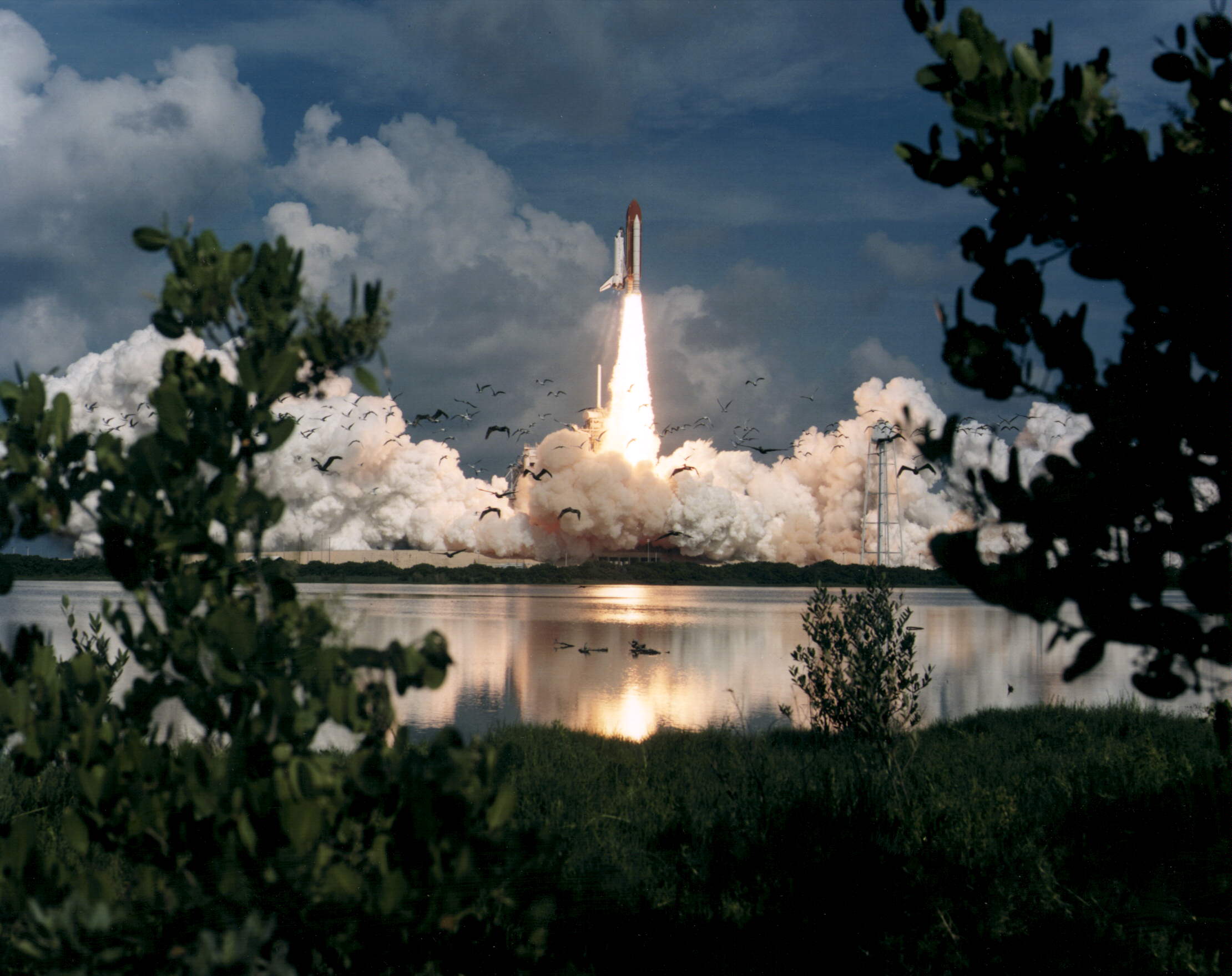
Over its 30-year career, many things attacked the Space Shuttle, from lawmakers keen to cut NASA’s budget to anti-nuclear protesters anxious not to launch the plutonium-fueled Galileo mission to Jupiter and from poor weather to dropped tools and near-catastrophic technical maladies. That is not to forget, of course, two appalling tragedies which claimed not only shuttles Challenger and Columbia, but also their heroic final crews, and several other missions which came within a hair’s breadth of disaster.
But of all the lethal things which bedeviled the shuttles over those three decades, none could possibly be as strange as the one which hit fleet leader Discovery 25 years ago. In fact, when he learned that a woodpecker had just scrubbed his mission, veteran astronaut Don Thomas thought someone was playing a prank on him. They couldn’t be serious. Could they?
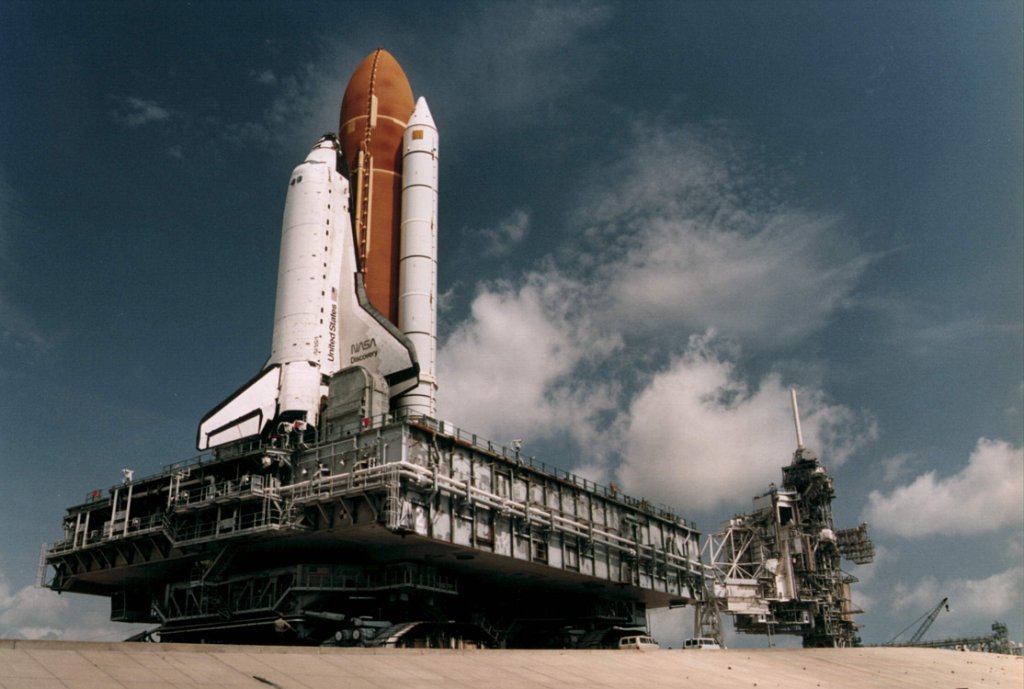
Across Florida’s Merritt Island, some 140,000 acres (57,000 hectares) play host to a dedicated National Wildlife Refuge, home to over a thousand species of plants, 330 types of birds, dozens of different kinds of fish, 68 amphibians and reptiles and 31 mammals. Twenty-one of them are formally listed as endangered and among that number is a medium-sized migratory woodpecker, the Northern Flicker, whose penchant for noisily drumming on trees or metallic objects over the Memorial Day weekend in 1995 quickly earned the ire of many at the Kennedy Space Center (KSC).
In early May 1995, NASA announced that shuttle mission STS-70 would launch in the second week of June, becoming the United States’ hundredth human spaceflight since the pioneering voyage of Alan Shepard in the Freedom 7 Mercury capsule, more than three decades earlier. The crew of Discovery on STS-70—Commander Tom Henricks, Pilot Kevin Kregel and Mission Specialists Don Thomas, Nancy Currie and Mary Ellen Weber—had been training since the summer of 1994 to deploy a large Tracking and Data Relay Satellite (TDRS) to enhance communications between shuttle astronauts and ground stations, as well as scientific observatories like the Hubble Space Telescope (HST) and the future International Space Station (ISS). By Memorial Day 1995, they were wrapping up their final few simulator sessions before heading down to the Space Coast for a period of quarantine, leading up to launch at 9:26 a.m. EDT on 8 June.
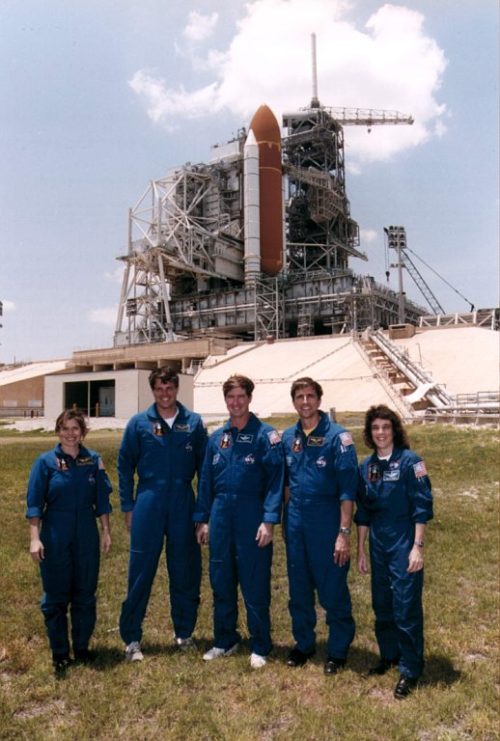
Aside from the TDRS payload, STS-70 was an important mission for NASA, in that Discovery’s crew would trial the new Block I Space Shuttle Main Engine (SSME) for the first time, equipped with the new Phase II+ powerhead, single-coil heat exchanger and a new High Pressure Oxidizer Turbopump (HPOT). Attached to her External Tank (ET) and twin Solid Rocket Boosters (SRBs), the shuttle stack was rolled out to Pad 39B on 11 May.
Three weeks later, right in the high heat—literally—of the woodpeckers’ mating season, NASA engineers were called out to the pad to an unusual sight: 71 deep “excavations” and many other beak and claw marks in the ET’s foam insulation. It appeared that a Northern Flicker, keen to make a home for itself, had mistaken the fuel tank for a tree.
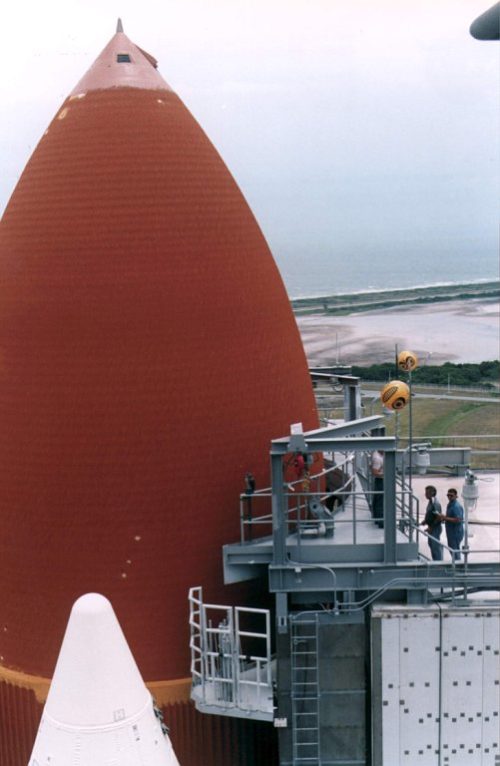
Years later, Thomas recalled some 205 holes which required attention. Some were small, others much more substantial, and varied in size from 0.5 inches (1.2 cm) to 4 inches (10 cm) across. Technicians at Pad 39B had managed to scare away further attacks using air-horns during the working week, but over the weekend there was a more limited number of personnel to keep the pesky avians at bay.
In a Rocket Ranch interview, Sandi Lee Morgan recalled that she and her secretarial colleagues were asked to stand at various levels on the pad over the weekend and blow air-horns if woodpeckers came near. It gave her a remarkable, if unplanned, opportunity to see the shuttle up close and personal and Morgan and her intrepid co-workers were later issued with pale blue T-shirts emblazoned with the legend “Pecker Patrol”.
But by 2 June, it was recognized that the damage was too acute for technicians to repair at the launch pad. Some of the holes pierced right through the foam and down to the metal surface of the ET itself, and Thomas found it impressive that a single woodpecker had enough persistence and determination to create so much damage. He had just emerged from a mid-morning training session on the TDRS deployment task when an instructor pulled him to one side and told him a woodpecker had just scrubbed his mission. At first Thomas thought it was a joke, until he popped his head into Henricks’ office and his commander confirmed that, yes, STS-70 was off for a few days or perhaps several weeks.
As such, Discovery was rolled off Pad 39B on 8 June and returned to the cavernous Vehicle Assembly Building (VAB) for repairs. A week later, the stack returned to the pad, along with a raft of measures to ensure no more woodpecker damage would be incurred. But there was a problem. As a protected species, no harm could come to the birds and so, in addition to air-horns, fearsome-looking Predator Eye balloons were set up around the launch complex. One helpful suggestion even advocated repainting the ET a nice shade of blue, a color woodpeckers apparently hated. The air-horns and balloons did the trick and no more misfortune befell STS-70, which eventually launched on 13 July.
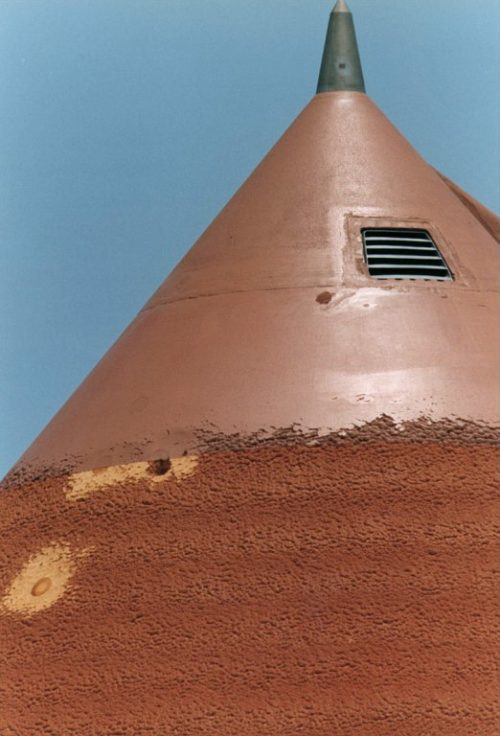
But there was another element of misfortune to hit STS-70. When the astronauts were assigned in August 1994, they realized that (almost) all of them hailed from Ohio: Thomas and Weber were both from Cleveland, Currie considered Troy her hometown and Henricks was born in Bryan. The sole outsider was Kregel, a New Yorker from Amityville.
Keen to identify themselves as the first “all-Ohio” shuttle crew, they contacted the office of Gov. George Voinovich to request “hononary” Ohio citizenship for Kregel. The governor’s office happily agreed and the STS-70 astronauts identified themselves as the first all-Ohio crew, even designing their mission patch in the shape of the letter “O”. Unfortunately, in the annals of history, STS-70 is remembered these days not as the all-Ohio crew, but rather—a tad disparagingly—as the “Woodpecker Crew”.
.
.
FOLLOW AmericaSpace on Facebook and Twitter!
.
.




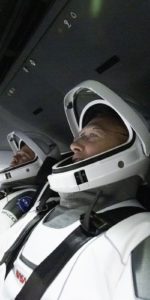
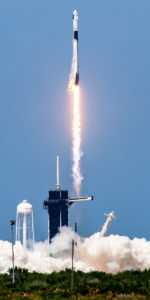
Hi Ben
I met Don Thomas at the SpaceBoosters astronaut event at The Hive in Worcester last October. Great talk and all round nice guy. I asked him about his Ankle. “Its fine” he said!
I must put my signed photo with Don (taken by Nick Deakin) on my Web Site!
Mike
As LEad Flight Director for STS-70 and the all Ohio-crew, this was one of the most UNUSUAL missions I ever prepared for. I had done many of the IUS/TDRS missions leading up to STS-70, so that was pretty familiar work for me. The “unfamiliar” was the attack of the ET by the woodpecker. It was amusing to some, and others hated the woodpecker. There were so many holes from this frustrated woodpecker, the launch was delayed so that the entire stack had to be rolled back to the VAB to patch the holes.
The crew had been invited after this to Universal Studios (Home of Woody Woodpecker). The crew was given a very large doll of Woody. At one of the Cape reviews, the crew asked me to take Woody back to Houston for the mission. Woody and I caught a Southwest flight back to Houston together. I got Woody a mission shirt, MCC access badge, and a headset. Woody then spent a mission shift with each of the MCC console positions, including the Flight Director console. My console was often on NASA TV and people began to notice Woody with me at the console. (picture available) Late in the mission, my Red Phone on my console rang. It is used for important calls. In answering the phone, I discovered the NASA Administrator on the other end of the line. At first, I thought he was calling me to congratulate us on a great mission. But that was NOT the case. He wanted to let me know that he was very mad at the Woodpecker for causing the launch delay, and was not interested in Woody being seen in the MCC, especially on NASA TV. It was either me…or Woody. I put Woody in the back support rooms…out of sight of the TV.
It was such an amazing and unusual mission because of Woody.
As an Epilogue, I was at the KSC Launch Control Center several years ago for a meeting. In walking through the LCC Lobby, there sat one the of older LCC consoles for display. In looking at it, my mouth dropped. There in the middle of the console was a “Woodpecker Horn Red Button”…all because of my flight on STS-70. A funny piece of history!
Jeff Parker published a classic cartoon in Florida Today about this time, with a baby bird sitting in a nest on the ET, looking at the Orbiter, and saying, “Are you my mommy?”